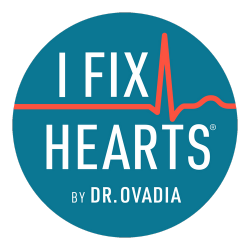The American idea of food is broken at its core. More than 73% of the US food supply consists of ultra-processed food imbued with colorants and additives.
But the US is the exception rather than the norm, especially when compared to European countries. The most heavily processed European countries consume just 43.8% of their calories in ultra-processed foods, while countries like Italy and Romania consume even less (just 14% of their diet).
European countries have also seen a decline in processed food consumption. The data shows a 2% to 15% decrease in processed food consumption over a decade, which is inverse of American processed food consumption (which jumped from 53.5% to 57% from 2002 to 2018).
This leads to an interesting and particularly nuanced question: is the European diet healthier than the American diet?
Yes and no.
Understanding the European diet
Americans are used to gigantic grocery stores lined with endless sweets and microwave dinners. This is uncommon in many European countries, especially Northern Europeans. There may be specific aisles marked as ‘American’ food (which consist of Twinkies, donuts, and chips), but most foods remain in an unprocessed state, since 75% of young shoppers cook their meals at home.
Today, whole, real foods remain a core part of the traditional European diet. Protein, dairy, and vegetables are usually high on the grocery list, while fruits and grains may be less common. As Americans, the vast majority of our diet stems from grains, cereals, and sweets — not ideal for metabolic health.
Interestingly, many European countries have strict policies on additives and ban foods with certain ingredients. Their bread, for example, is made without potassium bromate, which is a suspected carcinogen in American products.
There are other additives banned in Europe that are commonly found in US foods, including:
- Titanium dioxide (E171)
- Brominated vegetable oil (BVO) (E443)
- Azodicarbonamide (E927a)
- Propylparaben (E217)
Some European countries incentivize healthy foods with discounts and rebates. Apart from the occasional coupon, this isn’t common in America. Some Belgian stores (including Ahold Delhaize) offer 5% discounts for purchasing Nutri-Score foods — think Guiding Stars in the US.
Contrasting the Standard American Diet
With more context on the European diet, let’s take another look at the Standard American Diet.
For one thing, we see far fewer whole, real foods in American grocery stores. We also see more fast food restaurants and a higher likelihood to eat out. Today, roughly one in four Americans eat out once per week, compared to just 14% (approximately one in seven) Europeans.
Speaking of fast food, the content of American fast food is very different from Europe. A study from 2012 found higher levels of salt in American fast food chains than their European subsidiaries. This may be one of the reasons we see more hypertension in the US than Europe — although guidelines for hypertension diagnoses do differ between the two countries.
So is the European diet healthier?
The European diet is much less processed than the Standard American Diet. But that’s not to say there aren’t any unhealthy factors — it all boils down to your food habits.
For example, many European stores sell ‘shelf-stable’ milk, which is processed beyond the need for refrigeration (and therefore mostly nutritionless). Europeans also consume lots of bread and sausage, which can be overly processed and may introduce unhealthy fats and gluten to their diet.
Europeans also consume more alcohol than Americans. While the average European consumes 12 liters of alcohol per year, Americans drink approximately 10 liters or fewer. We know alcohol can wreak havoc on the body and lead to serious outcomes for metabolic health. This means the more alcohol you choose to consume, the less healthy you’re likely to be.
So is the European diet healthier than the American diet? Yes and no. There may be fewer processed foods on the shelves and fewer additives in food. However, Europeans often consume more alcohol and may struggle with their own varieties of processed foods.
I’ve never been one to put diets on a pedestal, or say that one way of eating is better than another. That’s why I only support one type of healthy eating — whole, real foods.
The metabolically healthy diet: whole, real foods
The average European diet contains fewer processed foods than the Standard American diet. This is a habit that would greatly benefit the US, especially from a metabolic health standpoint.
Whether you’re an American looking to maintain metabolic health or a European worried about the ‘Americanization’ of your diet, you can follow three steps to protect your health:
- Eat whole, real foods. This means buying things that come from the ground or are raised on the ground. Even if you don’t get discounts for buying whole foods, you may find yourself spending less since you don’t need as much to feel full. You can also try co-ops, CSAs, and farmers’ markets if you want to cut back your grocery bill.
- Get rid of hidden sugars and sneaky additives. Sauces, spice mixes, and other packaged foods may be hiding unwanted ingredients that harm your metabolic health.
- Avoid eating out as much as possible. Cooking at home may not be as convenient as grabbing a basket of chicken, but it’s far better for your metabolic health.
These tenants of healthy eating apply no matter where you live. My seven principles of metabolic health were designed for everyone — not just Americans.
Not sure if your diet is metabolically healthy? You’re welcome to take my metabolic quiz to find out. Once you provide a few details about your diet, I can send personalized suggestions to kickstart your health journey.
